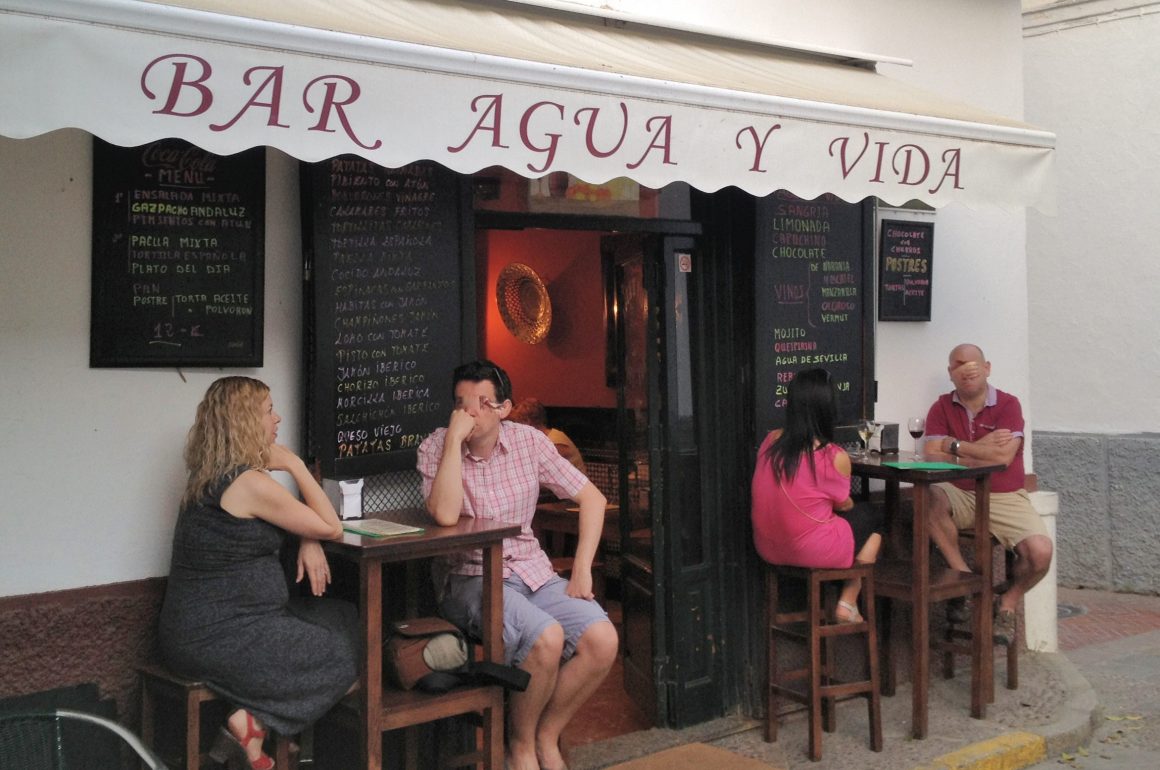
My aunt Greet gave me a book in 1975 that featured the 60 most endangered birds in Europe. Amazingly and quite contrary to what you would believe from the gloomy news most of these birds have since recovered and are doing well. Europe lost the Buttonquail (but abundant in Africa) but the Griffon, Cinereous Vulture (José Leal’s picture below) and several eagles are making a spectacular comeback. Barnacle Geese even made it to “agricultural pest” status.
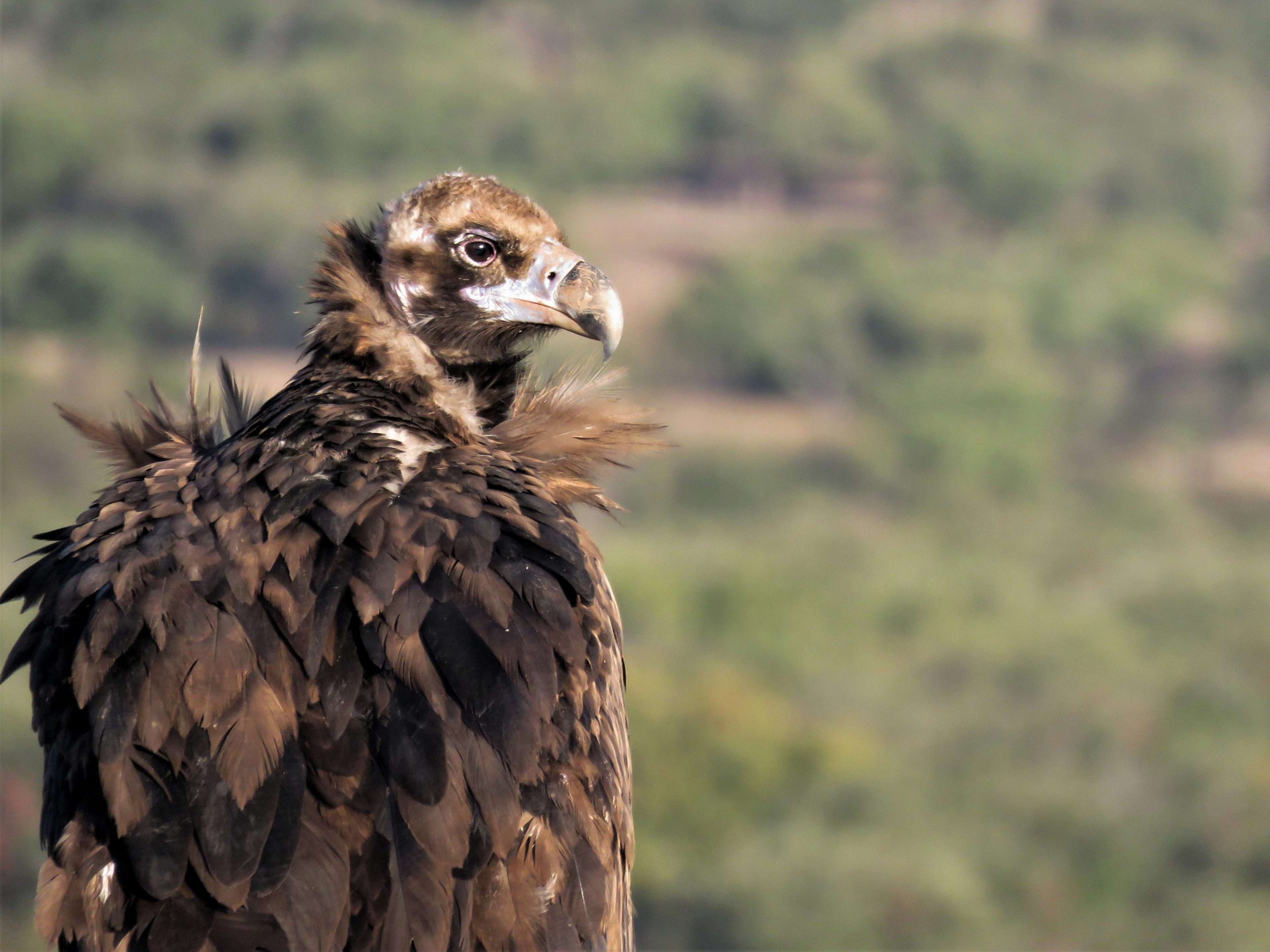
In the book, one picture stood out in particular: the White-headed Duck. The picture was not even in focus, like a UFO sighting! There were only a few dozen of these ducks left and the photographer – using old-fashioned analog film – took just one, very fuzzy shot. For lack of better pictures that was the one that got used in the book (out of print – ISBN 90 274 8348 5). Even so, the idea of one day going out to find this rare duck appealed to me.
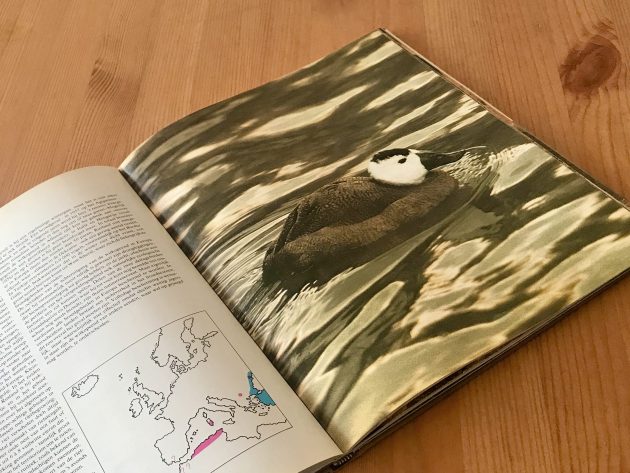
Life got in the way and nothing happened until well into the next century when I needed to do a project for a client in Spain. Southern Spain has been suffering from a long-term drought for a few years already. My client has a healthy watersheds strategy and I was going to Sevilla and Jaen for the first steps of the program. Water security isn’t easy. Case in point: the Spanish populists would sacrifice Doñana National Park to provide more water to strawberry farms. At the same time, they want to stop seasonal migration from Morocco, needed to pick these very same strawberries 3 months later. The science-based approach that recognises the dilemmas and identifies the hard choices isn’t election material, I suppose. Anyway, the work would take me to Andalucia – prime White-headed Duck country. Time to look for that UFO myself. I was going on a quest for a single species – something I normally just don’t do. I prepared with Ernest Garcia’s “Where to watch birds in Southern & Western Spain” and planned my detours.
I stayed close to the client’s facilities in the small town of Los Palacios y Villafranca. The town is down the road from the Brazo del Este – geographically a branch of the Guadalquivir and ecologically a part of the Doñana National Park. It’s not officially inside the National Park, but access is easier and the species tally isn’t too shabby, not at all. Among others, I saw a Spanish Imperial Eagle, abundant Western Swamphen, Common Snipe and both Spotted Redshank and Common Redshank. There were also a couple of Italian nudists, which never combines well with a bloke with high-power binoculars. But they were in front of a Western Subalpine Warbler so… Lovely bird.
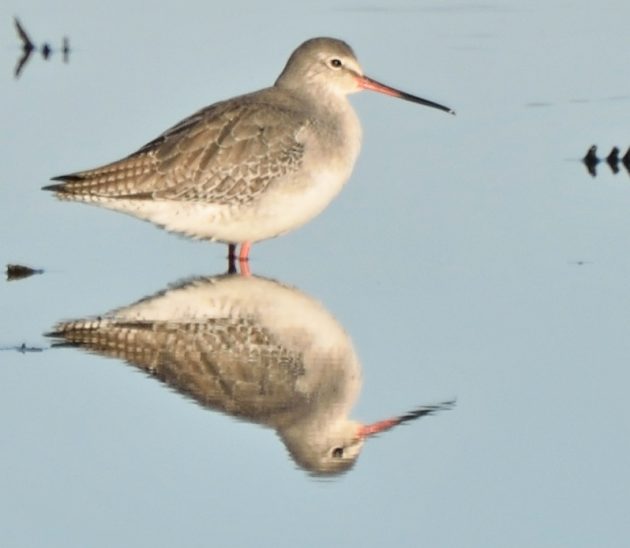
Brazo del Este is very easy to get to, even prior to going out to work, so I visited twice during my stay in the local hotel. From the town take the SE-9020 heading west, then southwest after Los Chapatales towards the settlement of Pinzón. Continue on the gravel road SE-9009 / SE-685. There will be large eucalypts and a canal on your right. After another few kilometres you will turn a very sharp right just after the rice mill, cross the canal and start your birding on the SE-659 (37° 4’53.84″N, 6° 2’20.57″W). Follow this road north and stop at all the ponds, walk around the fields and enjoy a great day of birding.
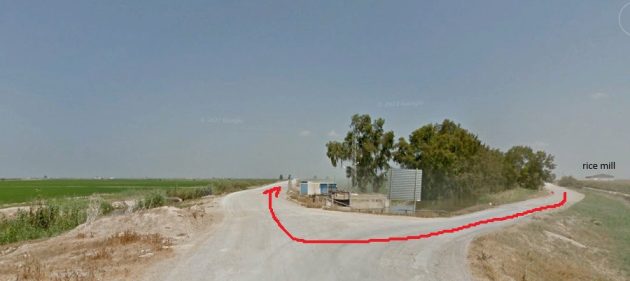
You can turn right at the irrigation station (37° 8’51.77″N, 6° 2’9.14″W) and drive on the northern side of the irrigation channel back to Los Chapatales. You can also continue further along the Brazo del Este. If you’re not on business than realise there’s a lot more places to visit in this region. Buy the book and take a week!
For all that’s good about the Spanish people they do have some annoying habits, especially concerning their daily routines. You will need to plan your birding day around these routines. For starters, your room should be away from the street as much as possible because the daily party will go on into the wee hours. Second, don’t count on breakfast since they tend to serve from 8:00 hrs, well past your departure for the birding grounds. Dinner tends to be very late with the kitchen opening at 21:00 hrs if you’re lucky. Lunch is usually at a reasonable time, so my solution is to buy fruit and drinks to cover breakfast and go for an elaborate lunch. Knife and fork, glass of wine and a nap afterwards. That’s OK – it will be too hot for birding. Then do more birding, have tapas and a beer and turn in for an early night. The tapas at the hotel were amazing: the cured ham was heavenly delicious, and the prices were devilishly low. I really liked my strategy and was deservedly proud of myself for figuring it out.
The duck did elude me – and to be honest, this is not the best spot anyway. Brazo del Este was just an excellent opportunity: close to the project location and too good to miss. However, I wasn’t done yet and with Ernest Garcia’s guidance, I did feel very confident to see the duck elsewhere. Since I needed to travel to Jaen for the second part of my project I planned for two stops along the way: Lagunas de La Lantejuela and Laguna de Zóñar.
Laguna del Gobierno is a very nice example of turning a liability into an asset. The nearby town La Lantejuela’s sewage receives advanced treatment, and the effluent is discharged into the laguna. This pond would be my first stop. I followed my GPS to get to the laguna and got lost, so best follow the instructions from the book. The area has been developed like a fairground with multi-coloured walls and buildings, swings, picnic spots and such. The top birders for this hotspot have seen close to 100 species. Maybe it was because of fiesta, maybe because of siesta, but everything was closed shut. Despite all the signs saying they were open for business… Fortunately, the surrounding wall was low, and a helpful bench aided by my 1 meter 92 body lifted my eyes high enough to peek over the wall straight into the eyes of a male White-headed Duck. That was easy!
From the wall, my view was limited but the birdlife in this pond is abundant. Greater Flamingo, both Black-necked Grebe and Little Grebe, and even some Lesser Kestrel in the surrounding fields. Of course, the whole detour and visit had taken longer than anticipated and I still needed to get to Jaen in time. I had my quarry, and so I decided to head east and skip the rest of my planned program. Recent checklists for Laguna de Zóñar do not list White-headed Duck so that may have been the right call.
The successful search for the duck has inspired me. And when my brother bought a house near Valencia, the target for the next quest was clear: Moustached Warbler. And that’s a good old-fashioned cliff-hanger – watch this space for more!


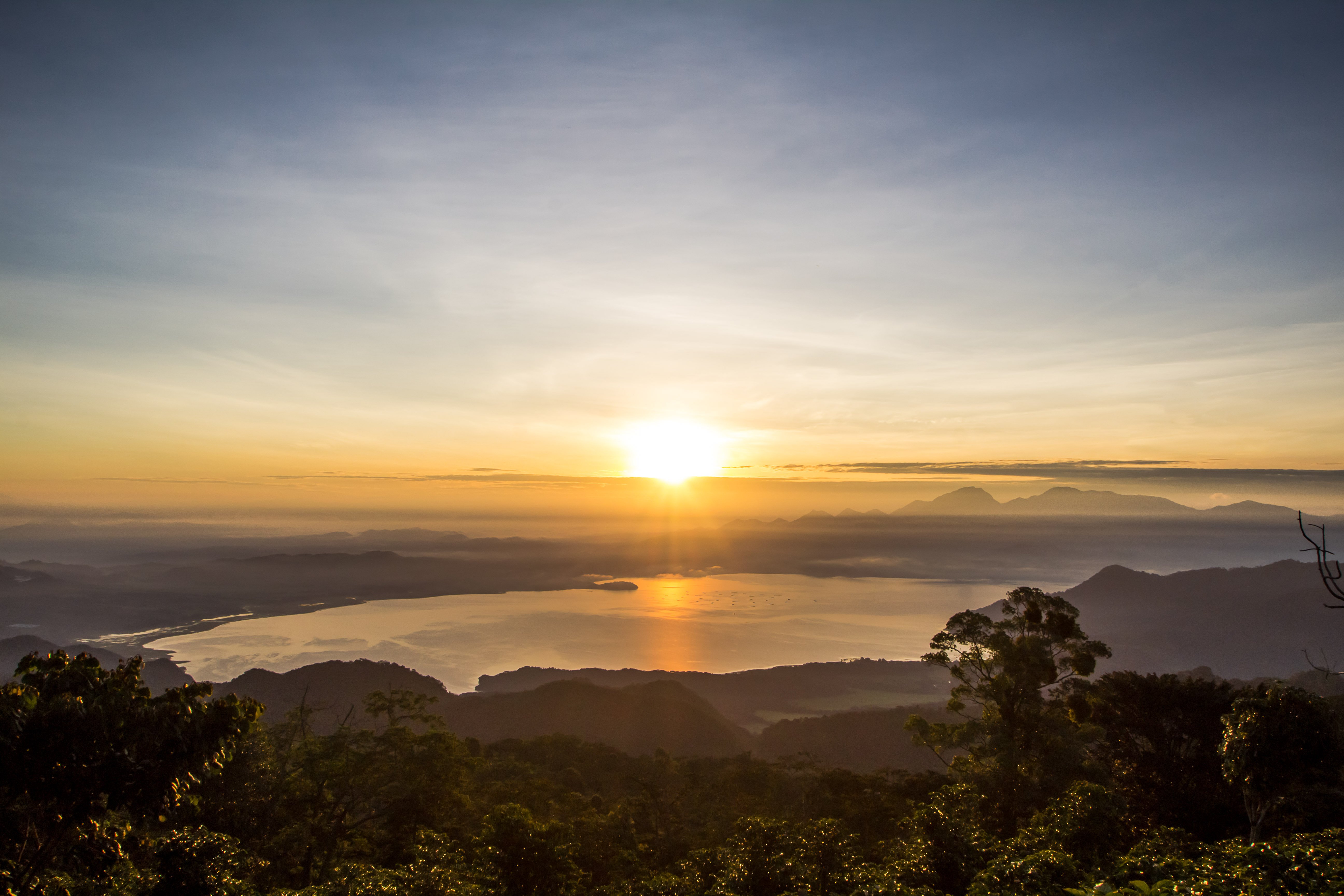

 New writers welcome – please contact us for details.
New writers welcome – please contact us for details.

















Another spectacular article! The directions are always realistic and helpful, but the honesty in the description of the viewing (standing on a bench to view over a wall…) is appreciated. Limiting the description of the Italian “birds” was appropriate if not slightly disappointing.
What are the population estimates for the white headed duck? Is Spain the principal habitat remaining?
I have the same book. There are two pleasant, if small, wetlands (Laguna la Mejorada & Humedal El Pantano) on the outskirts of Los Palacios y Villafranca which are well worth a visit. Although, like Brazo del Este, neither are locations for White-headed Duck these small sites are easily covered if short of time. The long drought in southern Spain has not been good for wetland birds with lagunas drying out and tamarisk scrub swallowing up many reedbeds and hence reducing the habitat for Great-Reed Warblers, etc. On the plus side Western Olivaceous Warblers are thriving, By far the best location for seeing White-headed Ducks in SW Spain is the Lagunas de Bonanza (aka Lagunas de Camino Colorado) where they can generally be seen at much closer range than at the Laguna del Gobierno. The same site also often has Marbled Duck which also features in the book (although it lacks the Great Bustards that can be found near Lantejuela). For further information on birding the sites mentioned (and many other sites in Cadiz Province) have a look at my blog on Birding Cadiz Province and, if interested, ask about my guide to birding sites in the area (it’s free but charitable donations to the Alzheimer’s Society are appreciated).
With regard to the size of the Spanish population, the most recent Spanish Atlas says the following – “The most recent estimate for the species places the current population for Spain and Morocco at 2,500 – 3,500 individuals ( Wetlands International, 2019 ). Although its presence has been known since ancient times in mainland Spain and the Balearic Islands, it is suspected that the species was never abundant. The drying out of wetlands in the first half of the 20th century caused the population to plummet. In 1950 it was estimated that there would be about 400 individuals which, 25 years later, had been reduced to 60 ( Sánchez, 1979 ). At the end of the 1970s, the population reached a minimum of 22 individuals in only two lagoons ( Torres-Esquivias, 1982 ). Since the beginning of effective conservation measures in 1979, it began to increase rapidly until reaching, in 2000, a maximum of 4,486 individuals ( Torres-Esquivias, 2008 ; 2015 ). Since then, the population has fluctuated around 2,000 individuals, even dropping to 1,600, whose fluctuations may be related to the Maghreb population; in fact, the recovery of the species in North Africa seems related to the decline after the maximum census in 2000 ( Bergier et al ., 2003 ; Cherkaoui et al ., 2013 ). The somewhat separate population of Algeria and Tunisia could be connected with the Spanish-Moroccan population and form a metapopulation unit ( Lazli et al ., 2011)”.
Thanks for the additions, @John Cantelo, very helpful!
@Bob Karls: Other European populations (as per European Breeding Bird Atlas 2):
Russia: 400-450 pairs; Turkey 80-125 pairs; Armenia 15-20 pairs